The Back Four: Frustrations and Formations
On Indy, Birmingham, Texoma, Tormenta, Pittsburgh, and more from the USL Championship and USL League One
Welcome in to The Back Four!
Before we start, check out Backheeled for Kieran Sargeant love, Phoenix being super fun, and more. You can also find This League! on the site for an audiovisual dive into the week that was.
Without further ado, let’s get to it.
Spark for the Three Sparks?
The Birmingham Legion are in a funk. This club has won twice in Championship play since the start of June, and much of the problem arises in the midfield. We saw the worst of that dynamic this week – but also the possibility that Mark Briggs has found an answer.
On Wednesday night in a crucial Jagermeister Cup battle, the Legion called on a rare all-defense pair in the pivot. Both starters, Edwin Laszo and Sam McIllhatton, were midseason additions that have done anything but hit the ground running.
In practice against Rhode Island, Laszo and McIllhatton were primarily culprits in a match where Birmingham won just 43% of their duels and allowed 101 pass completions in the final third. The defensive stopping wasn’t there, nor was any sense of progression; the Legion completed a truly dismal 34 passes in RIFC’s third and generated just 0.22 xG.
In a season-long context, that’s a familiar trend. The Legion rank sixth-from-bottom in the USL in terms of their final third entry margin, meaning that their opponents are far better at moving the ball into useful areas.
Frustratingly, it’s not like Birmingham is giving up the ball willy-nilly. This team is slightly above water in terms of their recovery numbers (+0.2 per 90 minutes), meaning that they’re actually decent in second-ball situations. Likewise, the Legion’s possession average is 50.5% since Briggs took over.
The problem is clear: in the middle third of the pitch, Birmingham can’t move the ball forward and can’t prevent their foes from doing so. The Legion haven’t used their possession.
That trend was readily apparent in the 1-0 loss to Rhode Island, even if RIFC’s winning goal was the byproduct of a long ball rather than between-the-lines progression. The real source of frustration, for my money, was an inability to execute on genuinely smart changes that Briggs tried to instill.
One shift was the use of that all-defense pivot in the first place. As we’ve seen, the choice didn’t pay off, but it didn’t come in isolation – it also allowed Enzo Martinez to play as a facilitating left winger rather than split his attention as a No. 8.
The fact that Martinez completed 12 passes in 78 minutes without creating a chance or attempting a shot indicates how well that approach went. Indeed, what you’re seeing here…
….is Martinez (circled) being forced to rotate low like an added center mid because of the frailties elsewhere. Not great!
You’ll also note that the back three (gold-tan) is bent out of shape. This match saw Ramiz Hamouda trusted as the centermost member of the back line, with the hope that his athleticism could help plug holes between lines. The concept was sound, but the actual execution lacked. Here, Hamouda’s charge at opposing striker JJ Williams doesn’t stop an attack; it actually opens a lane for a through ball between the remainder of the defense.
Because Hamouda has stepped high, every other Legion defender must punch inside to stay compact. In the process of those recovery rotations…
…you can see right wingback Stephen Turnbull (white) pinching low and committing to defensive responsibilities. It’s a good move from Turnbull and exactly what you need in this sort of situation, but it’s inherently limiting. If Birmingham were to regain, they’d not have any width upfield through which to challenge Rhode Island on the break.
Indeed, that absolute inability to counter is hinted at here. At the far edge of the frame, Ronaldo Damus and Samuel Shashoua are ostensibly in position to cause trouble, but they’ll be facing a two-on-three in the absolute best-case scenario. Because the midfield pivot fails, there’s a chain reaction that hamstrings the Legion everywhere on the pitch.
I’m not here to say it was all better at the weekend, but Briggs’ choice to push Shashoua into the pivot was revelatory. The Englishman played a fair share of his minutes in MLS and MLS Next Pro as a No. 8, and his showing while paired with McIllhatton – 37/42 as a passer, nine recoveries, perfect completion rate on long balls – evidenced those abilities.
Shashoua’s brightest moments came when he could spark counterattacking moves, but the way he manipulated Pittsburgh in transitional moments had knock-on effects all over the pitch. You’re seeing that here.
In this case, McIllhatton receives while turning to his left, and you’d think his natural next step would be a short sideways pass. If it were Laszo next to him, Pittsburgh might not care, thus opting to close hard on the Australian.
Instead, it’s Shashoua. The Riverhounds think a step ahead and send one of their No. 6s toward the Englishman, buying McIllhatton the space to turn and advance upfield.
There, the other bonus of Shashoua’s relocation comes to bear. Dropping the tucked-in winger archetype, Briggs prioritized verticality across his forward line. Preston Tabortetaka and Sebastian Tregarthen held down the wide roles on Saturday, and here their speed presents a threat in transition that gives McIllhatton more room to dribble.
The end of the clip might seem like a generic sideways pass, but it’s actually representative of stability within the final third. Birmingham will work from side to side from there, scoring a goal in less than 30 seconds from the end of the video – and it wouldn’t happen without that dynamic between McIllhatton and Shashoua.
Not every “defensive midfielder” needs to be purely defensive. Shashoua brings a level of spark that Birmingham has sorely missed, but he’s smart enough to stay within himself. If Saturday’s draw is any indication, the Legion have a real path forward thanks to the transition game that Sam Shashoua inspires in the central midfield.
Frustration in Indy
The always-essential Game Beckons blog, my long-time favorite source for Indy Eleven discussion, summed up the state of this team about as well as possible after a Jagermeister Cup loss on Wednesday:
Frankly, there’s very little room to disagree, even as the Eleven rebounded at the weekend.
Time and again this year, I’ve found it difficult to assess Indy. The names on the team sheet are hard to argue with, and offseason additions like defender Pat Hogan and wingback Bruno Rendon have mostly been good. At the same time, recent research into aging curves shows that you’d expect a typical player – position notwithstanding – to peak around 25 or 26 years old. If you want to point to one culprit for the Eleven’s struggles…
…then this chart is as good a place as any to start. What you’re seeing is an aging curve for the entire league, with Indy’s roster dotted for the sake of comparison.
If you pre-suppose that players start to decline beyond age 26, then it’s problematic to see six of Indy’s seven most-used players clear that line of demarcation. Now, the taxes collected by Father Time can vary. It’s still hard to argue that legendary players like Jack Blake or Aodhan Quinn can bring 90 minutes of box-to-box excellence in a demanding system.
Sean McAuley implicitly ceded as much on Wednesday night. At halftime, he took Blake off the pitch in the eventual loss to Greenville, and Indy’s fortunes even turned around for 20 minutes or so. Still, over-aggressive defending from players like James Musa (aged 33) and the continued inconsistency of Romario Williams (31) and Elvis Amoh (33) helped contribute to the loss.
Defensive transitions are a bugaboo for every team in the league – I just burned oxygen on them in the Birmingham section for a reason. Still, defensive transitions are particularly troublesome when you’re got old legs on one side of the pitch – as seen here, with Musa coming under pressure and Quinn nowhere to be found. Greenville found it too easy to create line-breaking situations that forced Indy to recover with long, tiring sprints.
Now, there are ways to control for those situations in a way that would suit this roster profile. Indy hasn’t done so. This team is unabashedly vertical, going long 19% of the time and advancing play upfield by 9.4 yards per pass. Both marks put the Eleven second in the USL.
Both also explain why this is one of just nine clubs to put up 20 box touches per match. That’s good! What’s bad is the effect the long game has on this squad.
To an extent, a direct attack in which dead balls are juiced and the tempo is slowed can save a team. Indy hasn’t done so, having conceded the sixth-most fast breaks in the Championship. In other words, the Eleven are an effective attacking team when they win second balls, but they’re very leaky when things go awry.
Admittedly, we saw progress this Saturday. Indy might’ve lost the xG battle to Miami, but they earned three points to jump back into the playoff field. Doing so relied on plays like this – controlled defensive transitions that didn’t necessitate full-field recoveries.
Because wingback Bruno Rendon dispossesses a rival carrier, the Eleven can stay active in the final third here. It’s a short-field situation defined by clever movement, not hopeful long passing. Specifically, the relationship between Maalique Foster and Blake – used as dual No. 10s over the weekend – is the thing that shines.
Too often, Indy has put Blake on an island as a solo creator between the lines. Here, that’s not the case. The duo’s give-and-take challenges Miami’s shape and ultimately allows the Englishman to score a beautiful goal from the edge of the box. It’s unlike much of what we’ve seen from Indy this year, but it must be the model for the rest of 2025.
So, where are we at? I’ll leave the reasonable criticism of the front office to those closer to the club, but this roster might be out of step with the USL in 2025, playoff position aside. Sean McAuley’s tactical choices only serve to underline that problem, and it’ll make playoff qualification a major hurdle unless he continues to moderate.
Texoma, tackling tepidness
Like a bad musician, Texoma’s got one note to play. This team puts up 0.6 xG per match in the run of play outside of transition; they’re last in League One with just 2.4 set-piece shots per match. If Texoma isn’t creating short-field break opportunities, they’re probably in trouble.
After going on a month-plus winless streak starting on July 5th, Texoma finally nabbed a win against a rotated Greenville team that had traversed the entire map over the last week. Even so, we’ve genuinely seen Texoma improve as of late – it’s why they’ve got a puncher’s chance of making the playoffs by my calculations.
Before we get to Los Pajaros’ “good,” we need to lay the groundwork of the “bad.” Too often, Adrian Forbes sat this team in a deep 5-4-1 hesitant to challenge for the ball. Texoma has averaged 46% possession this year while ranking 11th in the division for recoveries in both the final and middle thirds. They’ve simply been too meek, leading to low-block mistakes with frightful regularity.
Consider the play that’s developing here from a recent match against FC Naples. You’ll notice that Texoma sits in a flat shape with one forward (in white) and four midfielders (in red) all camped below the level of the center circle.
There’s no pressure coming up the wings, as opposed to a fairly standard tendency across the USL to turn a 5-4-1 base into a harder-charging 5-2-3. Naples knows that’s the case, so they allow left back Julian Cisneros to fly upfield on the underlap.
His run is highlighted, and it creates a localized three-on-two against the right side of Texoma’s back five. Because there isn’t a modicum of ball pressure, it’s easy for Naples to pick out that overload with a chipped pass toward the final third.
The balance never felt right in what became a 2-1 loss, and situations like the one above often turned into second balls claimed by Naples. Phila Dlamini and Ozzie Ramos are both 5’8”, and I say that with the utmost respect as a 5’9” guy. Still, someone like Naples’ Chris Heckenberg would break my bones – which, perhaps, is why the Texoma pivot combined to win just three duels in 90 minutes against him. Neither proved effective in a progressive sense, either.
I’m not here to tell you those patterns improved wholesale against Chattanooga last weekend, but Texoma looked far more lively. Teddy Baker, a 6’3” ball of energy, reclaimed a starting central midfield role. In the wide areas, you started to see some of that advancement into a 5-2-3 – or even a 3-4-3! – that could trap the Red Wolves at the sidelines and then drive ahead into Luke McCormick and Ajmeer Spengler.
That’s the idea here, with Texoma showing a refreshing amount of defensive flexibility. There are a few good things happening. Firstly, you’re seeing wingback Lamine Jawneh push ahead, using a “pass toward the sideline” trigger to justify a hard close-down.
That step doesn’t come in isolation. McCormick drops from the left wing of the 5-2-3 and achieves two things by doing so. If Chattanooga tries to work up the sideline, he can drop low to essentially replace Jawneh. Secondly, he’s clogging a central passing lane that could allow the guests to switch the point.
The rest of the forward line also conduct themselves admirably. Spengler and striker Brandon McManus both hedge ball-side, further tightening the screws. If Jawneh were to force a turnover – which he actually does here! – it’ll be far easier to hit both players and spark an all-important transition.
I’m not gonna fault anyone for losing to Chattanooga this year, because Chattanooga rocks. Still, the fact that Texoma couldn’t turn five shots on target into a goal was a disappointing outcome – one that forced Forbes to get even more adventurous against AV Alta in Week 25.
Here, it’s a 4-1-4-1 press for Texoma, one that could drop into a double pivot featuring Ramos and the more progressive Baker as needed. I’m going to elide the fact that Texoma choked this game away late and focus on what you’re seeing here: the way in which that high pressing shape yielded good results.
The front five combined for a completely stellar 15 recoveries last Wednesday night, and this sequence, featuring Brandon McManus backpressure from the striker spot, was a prime example. With heat coming from both sides, Alta is forced into a turnover that Jawneh can quickly convert into a goal.
You aren’t tempting fate in mid-low block here. Alta isn’t allowed to get into their preferred passing patterns. Instead, Texoma is forcing the issue. They only attempted 215 passes in this match, one of the lowest totals for any team in League One all year long. Still, they put seven shots on goal and limited the away side to just 1.0 xG.
Why mess with a good thing? Texoma might’ve collapsed against Alta, but they stuck with the back four against the Triumph.
I’d probably call the shape a 4-2-3-1, but it had layers. At times, the press shifted into more of a 4-2-4. Here, you’re seeing McCormick – the starting No. 10 – push ahead to match Greenville’s center backs to a man. Behind him, Baker steps from the pivot to fill in the midfield, whilst Spengler shadows a potential receiver in a similar space.
A similar play put Texoma on the board in the eighth minute. McManus’ pressure from the striker spot, extending all the way toward the opposing six-yard box, forced a tight pass into the midfield at an uncomfortable angle. There, Spengler stood ready to intercept. Seconds later, it was 1-0
Whether Texoma was lucky not to concede after that point is in the eye of the beholder. Still, they effectively used elevated pressure to get a goal and saw things out from there. This club is very, very good about killing the rhythm of matches when leading; the positive results against Greenville and Alta saw the ball stay in play for just 96 minutes out of a possible 205!
Is it particularly sustainable? Maybe not, but the positivity counts for something. Los Pajaros are belatedly breaking out of their shell – something we need to see from them far more often if they hope to qualify for the playoffs.
McKeever’s machinations
We’re two matches into the Mark McKeever experience in Statesboro, and that’s enough of a sample size to assess what Tormenta’s new era might look like. Even after a loss to Chattanooga where South Georgia played shorthanded for 70 minutes, we’ve learned a lot in 110 minutes or so.
The obvious point: there’s a new shape. Tormenta has loosely become a 3-4-3 team under McKeever, though what that label means can vary. What’s undeniable is that Tormenta is increasingly direct, bolstered by the new shape.
In that win against the Kickers, South Georgia posted a season-high 77 long passes and claimed 47 recoveries, the second-most of 2025. The approach cut two ways: Austin Pack was instructed to initiate vertically (or play short, draw the press, and let a center back hit the long ball) but Tormenta have also used their press to encourage opposing verticality in turn.
You see the bent of the press here. The shape skewed toward a 5-2-1-2 in Tennessee, mirroring a tendency to use Niall Reid-Stephen to mark the opposing No. 6 in Richmond. The aim of that inverted-triangle front line was to force the ball to the sideline, at which point the ball-side wingback would close down.
That’s what’s happening above. You can already see Gabriel Alves starting to hedge forward, getting ready to shut down a potential receiver. Alves attempted 10 duels in the game against Richmond, and he combined with right-sided Oscar Jimenez to make seven recoveries in that match to boot.
If the point of the press was to (1) force turnovers at the sideline or (2) encourage long balls, what did Tormenta’s structure look like in the latter case? Here, you’re seeing their alignment at the back in the wake of a Chattanooga launch, one wrought by Jimenez’s upfield pressure up the right sideline,
Makel Rasheed, the centermost member of the back three, is seen heading the ball, but he’s got support all over the place. Callum Stretch, the right-sider, has hedged up as a stopgap behind Jimenez, but he’s ready to claim a potential knockdown after Rasheed’s header. The pivot stands ready as well. Meanwhile, Alves is providing crucial support on the back side, stabilizing in case Chattanooga wins the ball and tries to switch the point.
Even while playing with 10 men, Tormenta still managed to post 45 final-third entries against the Red Wolves, within shouting distance of the 55 that Chattanooga garnered. They won that battle against Richmond, and the newfound organization at the back is a major reason why.
On the ball, width has been the order of the day. When Tormenta has been able to fully bend into a 3-2-5, they’ve looked dangerous – hence why they’ve put up net-positive xG under McKeever at even strength (+0.01) versus a deep deficit (-5.34) under Ian Cameron.
That offensive shape is succeeding here. Reid-Stephen is on the ball, with Alves ripping up the sideline next to him to freeze the opposing right back. You can see Richmond’s defense fixating on Tormenta’s left while hedging against Mason Tunbridge and Yaniv Bazini up the middle; Jimenez clearly has room at the far side.
Generally, Bazini did well to facilitate from the No. 9 spot against Richmond, allowing runners to burst over top of him. The interplay between wingers and wingbacks was paramount, but there was a real whack-a-mole sensibility to the offense – the Kickers didn’t know who to stop.
It’s a similar idea here, with left-sided defender Jackson Kasanzu stepping into space and chipping a pass toward a vertical Alves run. This is exactly the sort of pattern you want to see against Chattanooga, namely a localized three-on-two that allows for bold vertical passing against their back five. This play will ultimately lead to a cross from Alves and a Bazini shot that’ll ring off the post – a sliding doors moment if there ever was one, given how Saturday played out.
Is it all perfect? Of course not. The pivot pairing of Conor Doyle and Gabriel Cabral has been good, but the Kickers found ways to drive passes through them and advance between the lines. Turnovers in the final third have been costly, forcing full-field recoveries from the wingback spots.
Still, transitioning into a new era is never easy. For years, Tormenta was defined by Cameron’s possessive style, and the fact that McKeever has quickly instilled a radically different look bodes well. We’ll see if South Georgia can pull it together to make the playoffs, but they’ll be a tough out at a bare minimum.
Boone boon
Let’s run down the numbers on Pittsburgh’s offense this year. The Riverhounds rank:
20th in the USL with 1.04 xG per match
22nd with 0.89 xG on target per match
1st with 66 passes into the final third per match(!)
9th with 19.8 touches in the box per match
When I think about the Riverhounds, I absolutely don’t think about a team that gets into the attacking zone for fun, but here we are! In some ways, it’s probably a logical conclusion; Bob Lilley’s press is terrific at forcing bad passes and dictating where and how matches are played.
At the same time, the disconnect between the territorial control and the dismal xG returns – both in terms of shot locations and finishing quality – is worth discussing.
Pittsburgh tends to run a 3-4-2-1 attacking shape with two withdrawn midfielders sitting beneath striker Augustine Williams. It’s a shape that’s usually short on third-man movement into the box and threatening combination play. This Saturday, we saw Lilley vary on the theme.
Consider this play…
…where Pittsburgh is just getting into the final third. You see Williams on the edge of the frame, joined by Charles Ahl and Chase Boone. There’s space between the lines, but you can tell that there’s little movement actually taking place.
Coming out of halftime in Saturday’s draw against Birmingham, Pittsburgh re-shaped their lineup in a 5-2-1-2 of sorts with Ahl as the No. 10 and Boone roving across the forward line next to Williams. In build, the shape was really more of a wonky 4-3-1-2 – right wingback Perrin Barnes pushed ahead, while left wingback Junior Etou sat deep until entrance in the attacking half arrived.
That transition is happening above, with Etou (in yellow) getting into the attacking half. Still, it’s all coming a bit too slowly. You can see Birmingham in their defensive shape, and Etou’s delayed arrival doesn’t force the Legion to overextend against that narrow front line.
Now, this wasn’t a brand-new innovation. Lilley broke out a similar construction from the jump in a Jagermeister Cup match against Portland, leveraging the Ahl-Etou combination to maximum effect. Boone adds something new and different into the equation, and it’s a major reason why Pittsburgh ended up with a point against the Legion – as opposed to a penalty loss against Hearts of Pine a few weeks back.
Consider this sequence, specifically noting the pace with which Pittsburgh is able to advance. Of course, you’re starting in a pressing stance here, with Etou already hedged upfield to close down on a Legion passer.
That aggression breeds a turnover, at which point the Riverhounds immediately play through the thirds. Ahl almost serves as a dummy here, forcing the scrambling Legion to mis-focus their recovery and thereby cede space to Boone. Meanwhile, Williams is reading the situation and identifying a chance to make an absolutely terrific diagonal run in behind.
This play will end with a shot of middling quality, but it portended a Boone-to-Williams equalizer that came just 10 minutes later. The former Monterey man led all players with four chances created in his 45-minute cameo, and he feels like an important piece in the ongoing puzzle.
If Pittsburgh has lacked anything in 2025, it’s the sort of player that can receive between the lines, drive at defenders, and create trouble from anywhere in the final third. Boone has an eye for space that meaningfully improves Pittsburgh’s tempo – the very thing that can solve the disparity between abundant final-third entries and dangerous chance creation.
Whether Lilley keeps playing with his shape or not, it seems clear that Chase Boone has to be part of the lineup to take the Riverhounds to their next level.
Quick Hits
In other news this week…
I feel like I should plug Bluesky every week? I’m posting video clips far more regularly over there because (1) they aren’t threatening to ban me on tenuous copyright grounds and (2) they actually let Backheeled have an account.
Las Vegas might have a new coach, but Gennaro Nigro season is still chugging along. The left back took 93 touches against North Carolina, hit 17 passes into the final third, and contested 11 duels while holding his own against Pedro Dolabella. He’s a star, and he ought to be a key piece of the ongoing Devin Rensing revolution.
I’m putting it in ink: if we get an El Clamico final in the Jagermeister Cup, I’m going.
Don’t look now, but Union Omaha is tied for the final playoff spot in League One after a tempestuous start to their year. Everything about their clean-sheet win over AV Alta this weekend was great – see a +17 shot margin and +2.2 xG edge – but I came away particularly impressed with the muscularity of the press. Brandon Knapp, Chelo Martinez, and the more withdrawn Max Schneider combined for more than 20 duels in the central midfield, and they knew exactly when to charge ahead to deny Alta their usual angles within the defensive 4-2-3-1.
We’re transitioning from a rap-heavy summer into an indie, pop-laden fall. On that note: Laufey album good! We need more bossa nova- and jazz-inspired music in the zeitgeist!

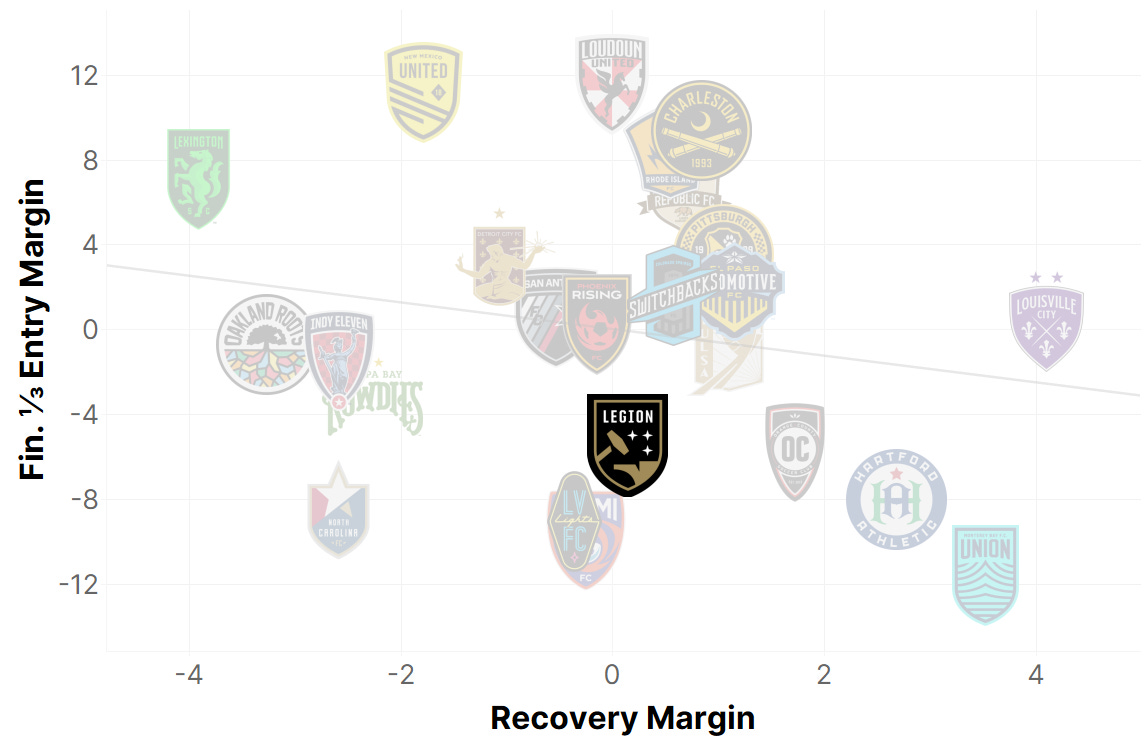
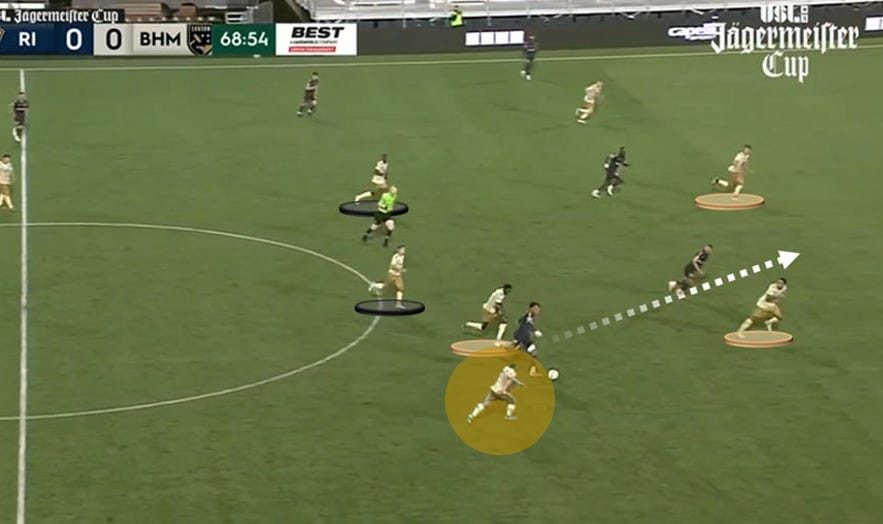
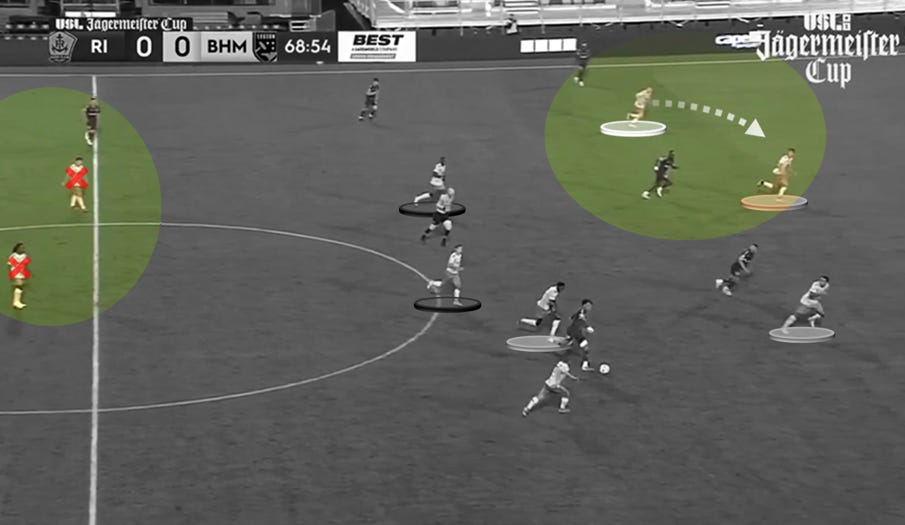
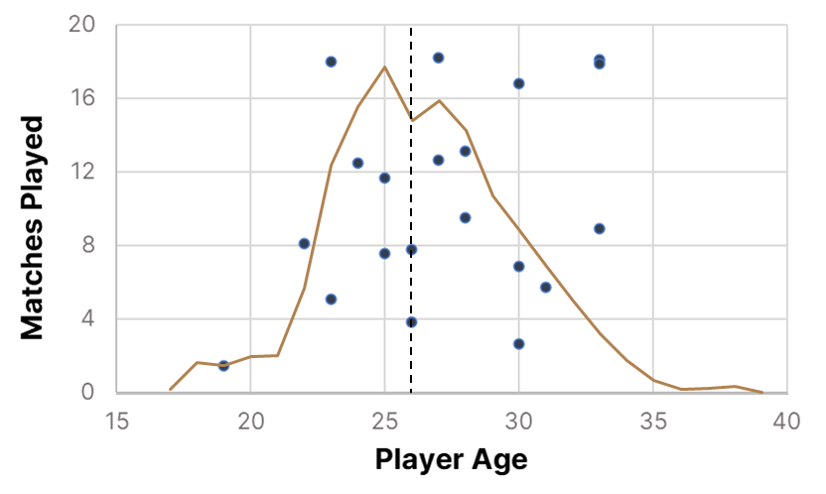
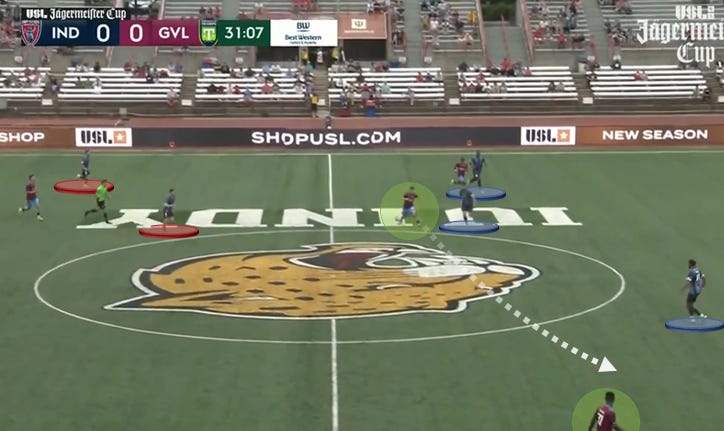
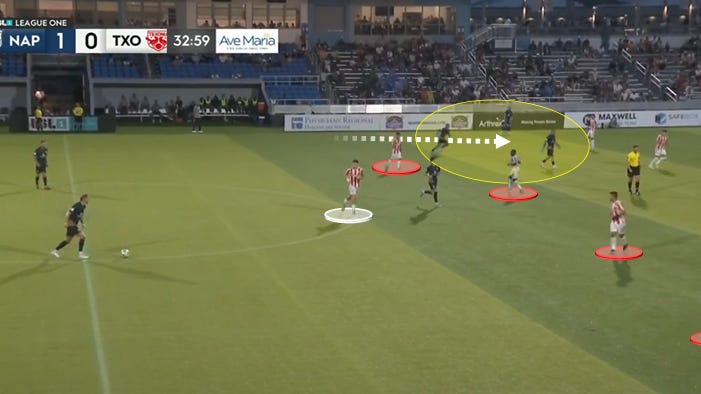

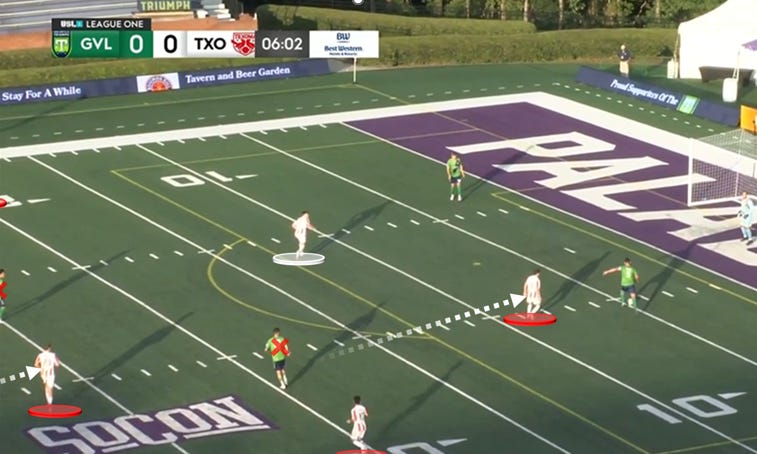
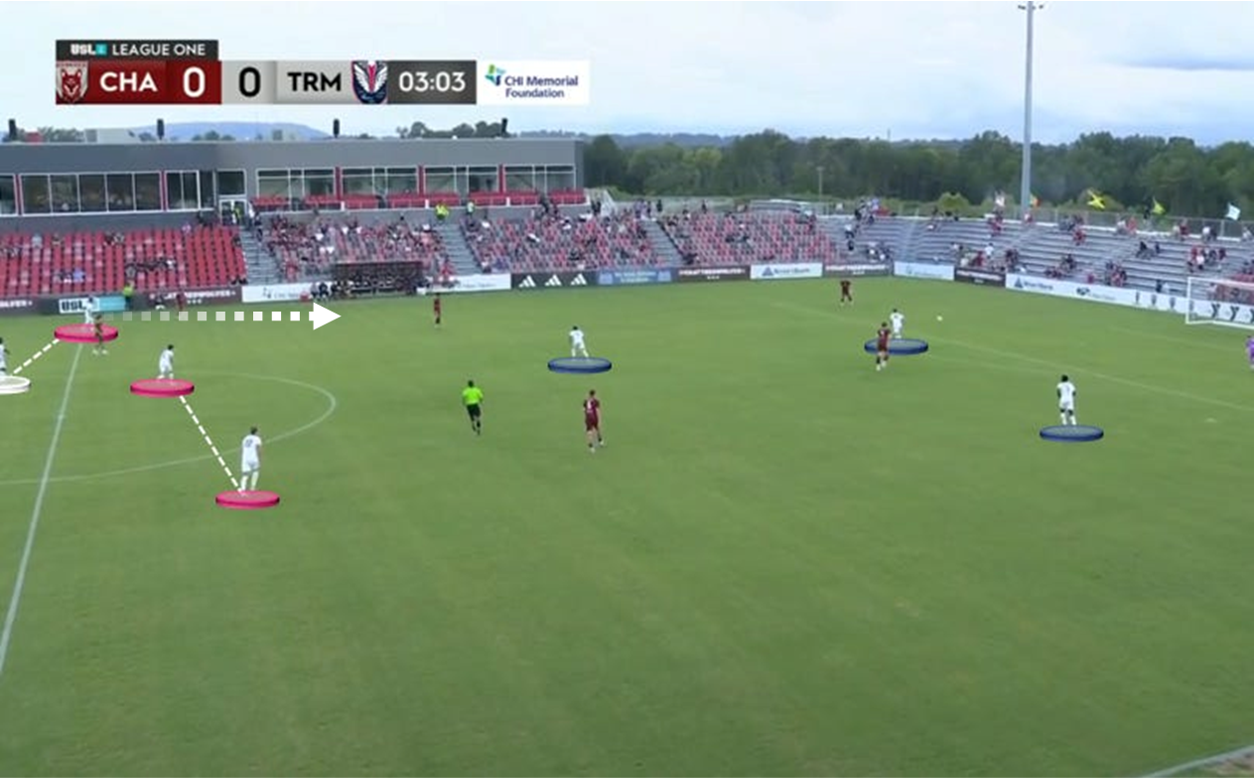
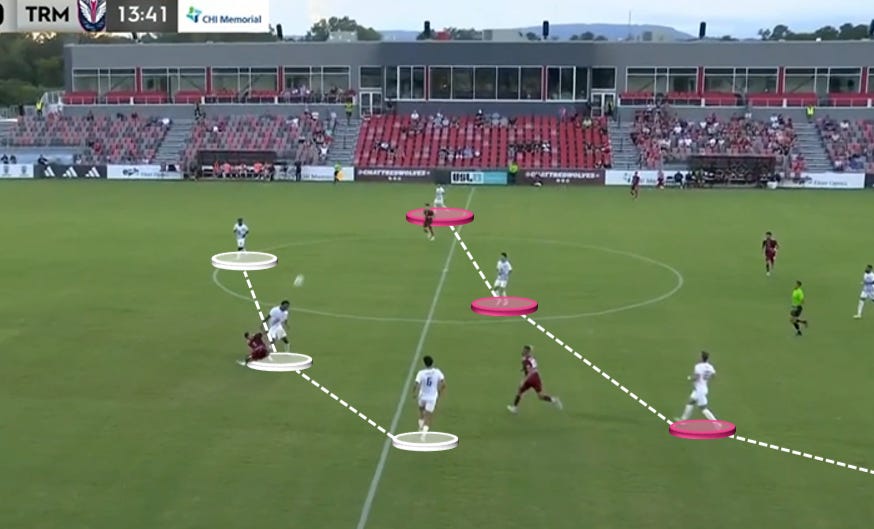
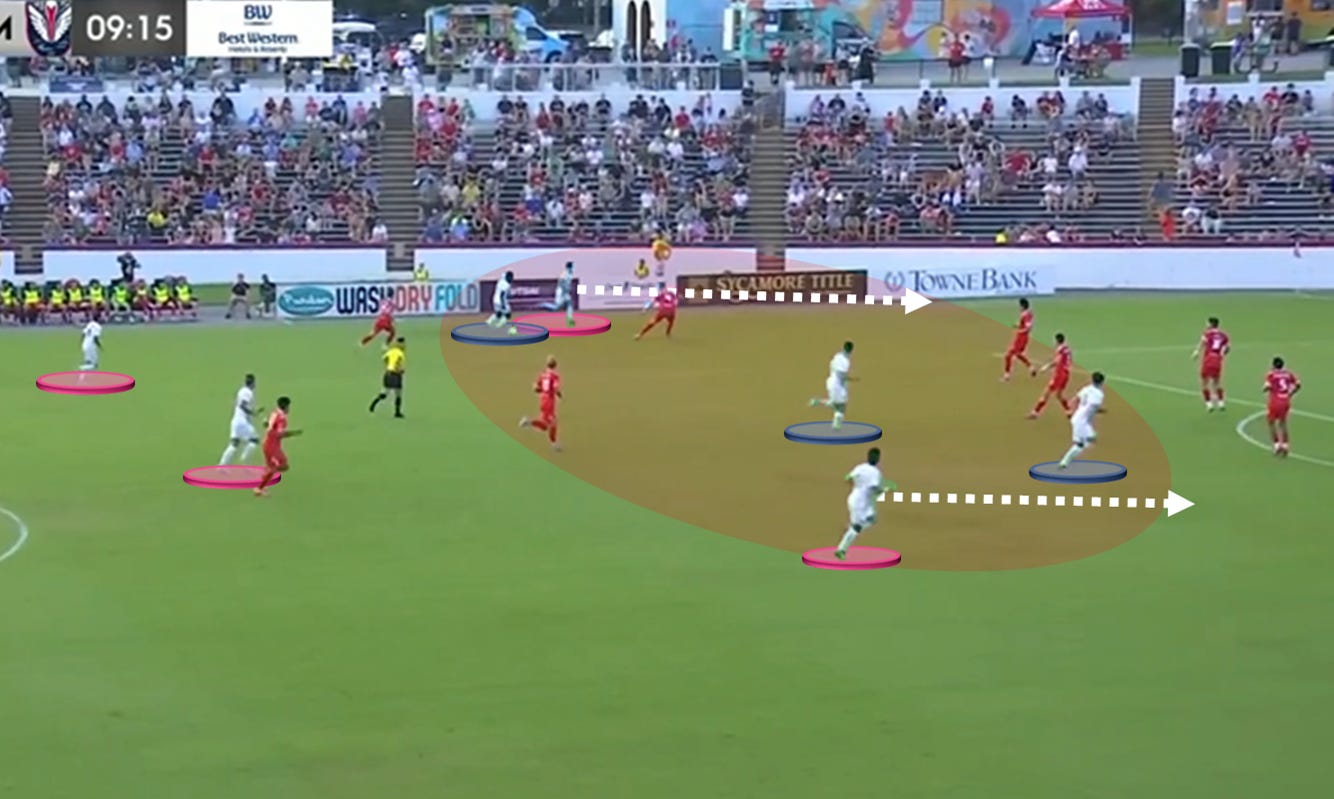

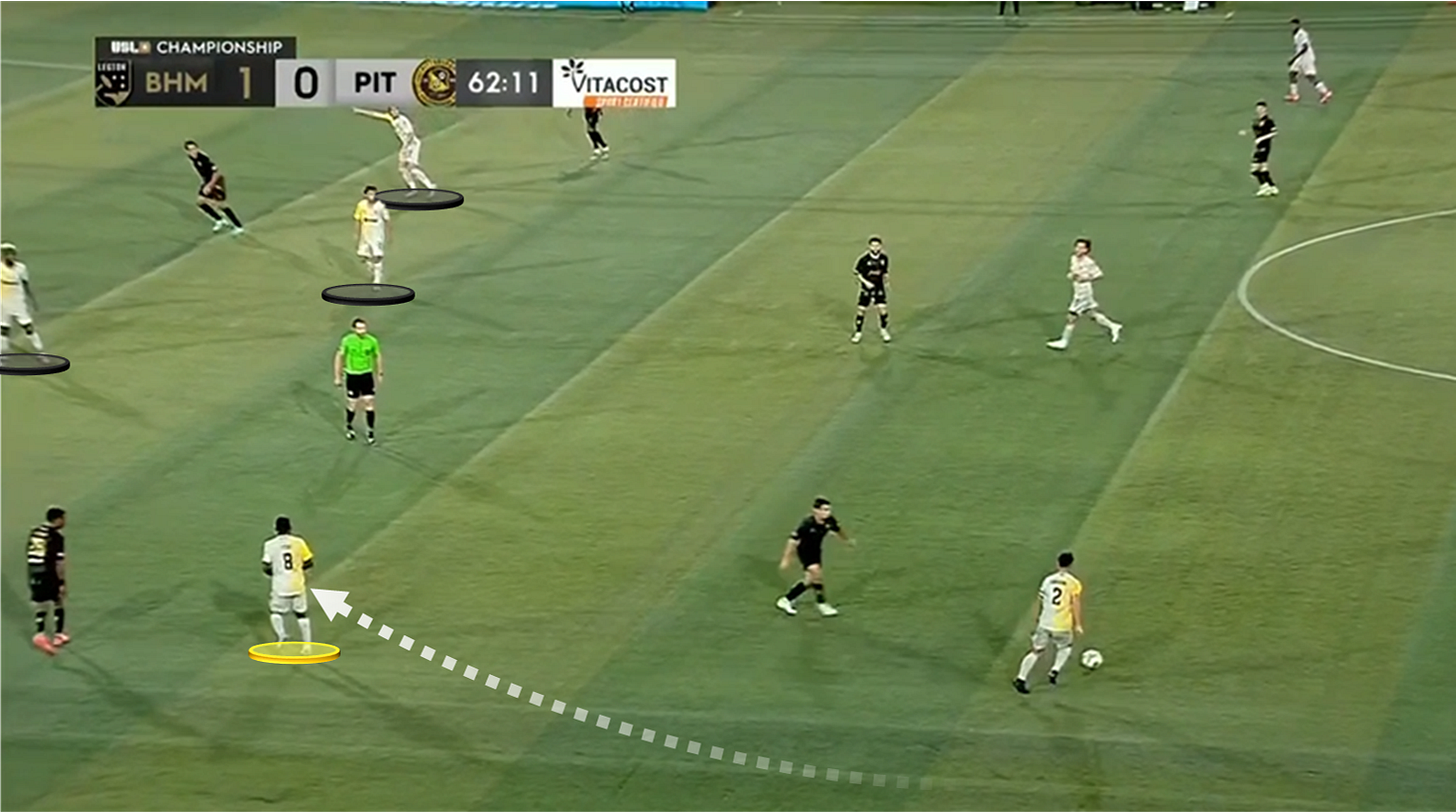
With mentioning both Texoma & Omaha, you’ve watched some AV this week… any thoughts about what’s off kilter for Alta during our current slide?